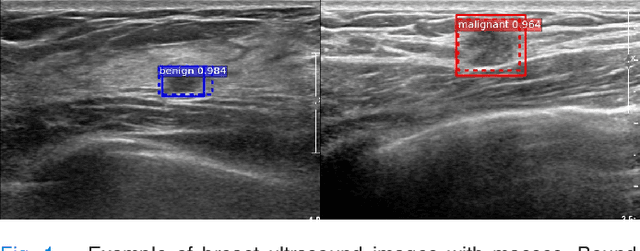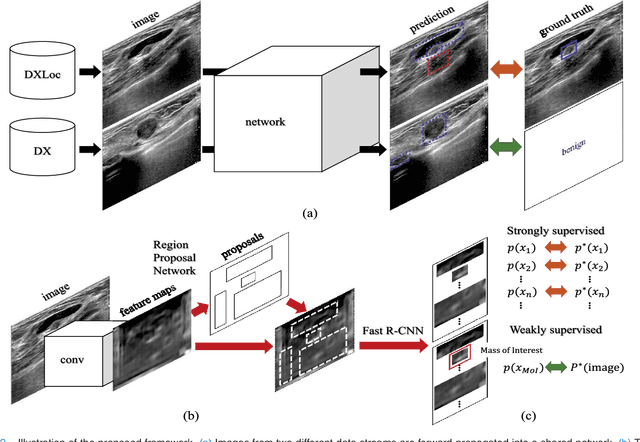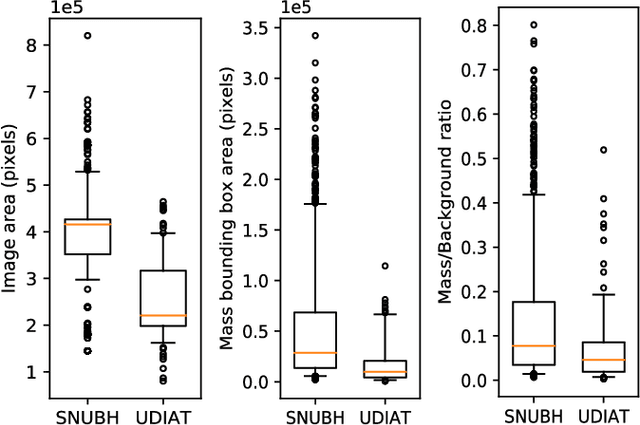Joint Weakly and Semi-Supervised Deep Learning for Localization and Classification of Masses in Breast Ultrasound Images
Paper and Code
Oct 10, 2017



We propose a framework for localization and classification of masses in breast ultrasound (BUS) images. In particular, we simultaneously use a weakly annotated dataset and a relatively small strongly annotated dataset to train a convolutional neural network detector. We have experimentally found that mass detectors trained with small, strongly annotated datasets are easily overfitted, whereas those trained with large, weakly annotated datasets present a non-trivial problem. To overcome these problems, we jointly use datasets with different characteristics in a hybrid manner. Consequently, a sophisticated weakly and semi-supervised training scenario is introduced with appropriate training loss selection. Experimental results show that the proposed method successfully localizes and classifies masses while requiring less effort in annotation work. The influences of each component in the proposed framework are also validated by conducting an ablative analysis. Although the proposed method is intended for masses in BUS images, it can also be applied as a general framework to train computer-aided detection and diagnosis systems for a wide variety of image modalities, target organs, and diseases.
 Add to Chrome
Add to Chrome Add to Firefox
Add to Firefox Add to Edge
Add to Edge